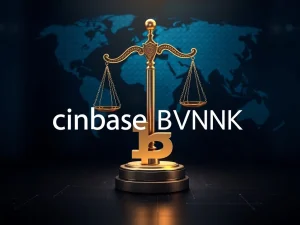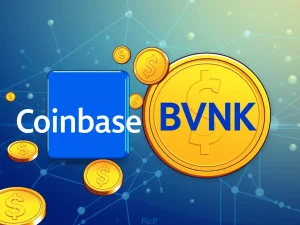Shocking $5 Million ZKsync Hack Exposes Critical Security Flaw

In a startling turn of events that has sent ripples through the crypto community, ZKsync, a prominent Ethereum layer-2 scaling solution, has fallen victim to a sophisticated cyberattack. An attacker successfully compromised an administrative account, leading to the unauthorized minting of a staggering $5 million worth of ZK tokens. This critical security breach underscores the ever-present vulnerabilities in the digital asset space, even within projects lauded for their innovative technology and robust security measures.
Unpacking the ZKsync Hack: How Did the Security Breach Unfold?
On April 15th, ZKsync disclosed a concerning incident via their official X account: a hacker had infiltrated an admin account with control over airdrop distribution contracts. This wasn’t just a minor glitch; it was a calculated exploit that allowed the attacker to manipulate the system for significant financial gain. Let’s break down the key aspects of this crypto hack:
- Compromised Admin Account: The attacker gained access to an administrative account, a high-privilege access point within the ZKsync ecosystem.
- Exploited Function: The hacker leveraged a function named
sweepUnclaimed(), designed for managing unclaimed airdrop tokens. - Massive Token Minting: Using this function, the attacker minted a colossal 111 million unclaimed ZK tokens.
- Significant Value Grab: These newly minted tokens were valued at approximately $5 million, instantly increasing the total ZK token supply by 0.45%.
- Isolated Incident: ZKsync has emphasized that this was an isolated incident, assuring users that no user funds were directly affected.
While the reassurance of user fund safety is welcome, the incident raises serious questions about the security protocols surrounding administrative accounts and smart contract functionalities within even well-established crypto projects like ZKsync.
ZK Token Price Volatility: Market Reaction to the Hack
The immediate aftermath of the ZKsync hack was palpable in the market’s reaction to the ZK token (ZK). As news of the breach spread, the token experienced significant price fluctuations, demonstrating the sensitivity of the crypto market to security incidents. Here’s a snapshot of the market’s response:
- Initial Price Drop: Upon public disclosure, the ZK token price plummeted by 16% around 1:00 pm UTC.
- Temporary Low: ZK reached a low of $0.040 amidst the panic selling.
- Partial Rebound: Subsequently, the token price showed resilience, bouncing back to $0.047 by the time reports were being written.
- Overall Decline: Despite the rebound, ZK still registered a 7% decrease in value over the 24-hour period following the incident.
This price volatility serves as a stark reminder of how quickly market sentiment can shift in the face of security vulnerabilities. Even though ZKsync attempted to control the narrative by labeling the incident as ‘isolated,’ the market’s initial reaction reflects investor unease and the potential for lasting damage to project reputation.
Digging Deeper: Understanding the Admin Account Compromise
The core of this incident lies in the compromise of a ZKsync admin account. Administrative accounts, by their nature, possess elevated privileges and control within a system. In the context of blockchain projects, these accounts often manage crucial functions like smart contract deployments, parameter updates, and, as in this case, token distribution. The successful breach of such an account highlights potential weaknesses in:
- Access Control: Were the security measures surrounding this admin account sufficiently robust? Multi-factor authentication, hardware wallets, and strict access protocols are paramount for high-privilege accounts.
- Contract Function Security: While the
sweepUnclaimed()function may have been intended for legitimate administrative purposes, its exploitation reveals a lack of adequate security checks or safeguards against malicious use from a compromised admin account. - Monitoring and Alerting: Was there sufficient real-time monitoring in place to detect unusual activity, such as a sudden and massive minting of tokens? Timely detection can significantly mitigate the impact of such attacks.
ZKsync’s ongoing investigation, in collaboration with the Security Alliance (SEAL), will be crucial in uncovering the precise details of the compromise and implementing enhanced security measures to prevent future incidents.
The Broader Context: Crypto Hacks in 2025 and Beyond
The ZKsync hack is unfortunately part of a larger, more concerning trend in the cryptocurrency landscape. The article mentions that a staggering $2 billion has already been lost to crypto hacks in the first quarter of 2025 alone. This figure, just shy of the total losses for the entirety of 2024, paints a grim picture of the escalating threat environment. Key takeaways from this broader perspective include:
- Rising Losses: Crypto hacks are becoming increasingly frequent and costly, posing a significant risk to the industry’s growth and user trust.
- Evolving Tactics: Hackers are constantly refining their techniques, exploiting vulnerabilities in smart contracts, decentralized platforms, and even seemingly secure administrative systems.
- Need for Vigilance: Both projects and individual users must adopt a proactive and vigilant approach to security, prioritizing best practices and staying informed about emerging threats.
As the crypto space matures, so too must its security infrastructure. Incidents like the ZKsync hack serve as a wake-up call, emphasizing the urgent need for continuous improvement in security protocols, auditing practices, and incident response capabilities.
Moving Forward: Lessons Learned from the ZKsync Incident
While the ZKsync team is working on recovery and has stated that the sweepUnclaimed() vector is no longer exploitable, the incident offers valuable lessons for the entire crypto ecosystem:
- Prioritize Security Audits: Regular and rigorous security audits, conducted by reputable third-party firms, are essential to identify and address potential vulnerabilities.
- Strengthen Access Controls: Implement robust access control mechanisms, especially for administrative accounts, including multi-factor authentication, hardware wallets, and role-based access.
- Enhance Monitoring and Alerting: Deploy real-time monitoring systems and anomaly detection tools to identify and respond swiftly to suspicious activities.
- Incident Response Plans: Develop comprehensive incident response plans to effectively manage and mitigate the impact of security breaches when they occur.
- Community Transparency: Maintain open and transparent communication with the community during and after security incidents to build trust and confidence.
The ZKsync hack is a stark reminder that security in the crypto world is not a destination but an ongoing journey. By learning from these incidents and proactively strengthening our defenses, we can collectively work towards a more secure and resilient crypto future.
In Conclusion: A Wake-Up Call for Crypto Security
The $5 million ZKsync hack serves as a powerful wake-up call to the cryptocurrency industry. It underscores the critical importance of robust security measures, particularly around administrative accounts and smart contract functionalities. While ZKsync acted swiftly to address the immediate aftermath and reassure its community, the incident highlights the persistent and evolving threats in the crypto space. As we move forward, a renewed focus on security best practices, proactive vulnerability management, and transparent communication will be paramount in building a safer and more trustworthy crypto ecosystem. The lessons learned from this alarming breach must be heeded to prevent similar incidents and safeguard the future of decentralized finance.







